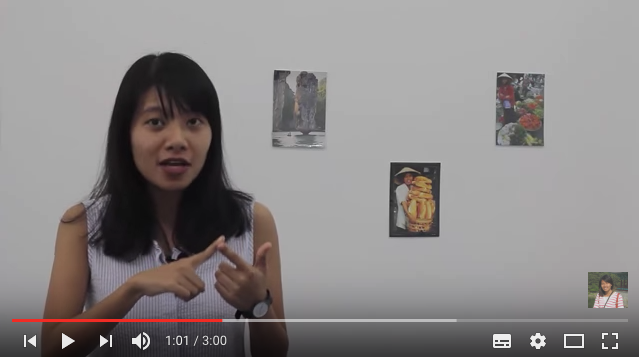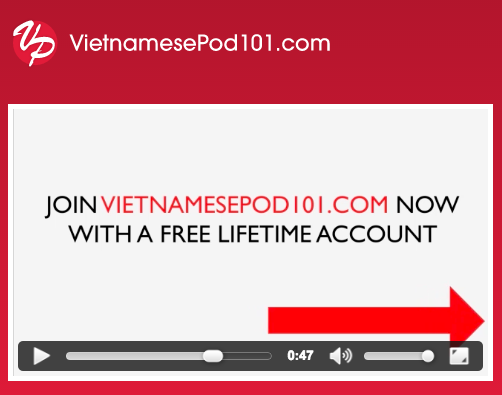10 Simple Games and Exercises to Practise Your Vietnamese Skills
In the summer of 2015, a Vietnamese production company asked me if I would be the main character on a new TV show. My own TV show? This was a dream come true!
The show’s name is “Funny English Class”, or “Lợp Tiếng Anh Vui Vẻ”. It’s show aimed at children ages 4-8. Since accepting the gig, I’ve realised that teaching kids while being on screen is one of the hardest things I’ve ever done in my life.
All we do is sing songs and play games. But the kids love it, and they also learn a ton.
It made me wonder…
Why can’t adults do the same?
See, language learning can be as boring or as fun as you want it to be. So, might as well make it fun right!?
Adults don't play games as often as we should (myself included!). Games are fun. They're helpful and we can learn from them too. What if we played more games in order to improve our language skills?
Add to that the fact that adults are better language learners than kids, and we can use games to make some hefty progress our target language!
If you’re learning Vietnamese, the list below will help you enormously at improving your Vietnamese skills. If you’re learning something else, use these as suggestions to get creative with your target language!
1. Play the Family Tree Game

In Vietnamese, you must address the person you are talking to according to their age, gender, and relationship to you. This is the main reason Vietnamese people are quick to ask you how old you are. It’s not because they’re being rude and in your face, it’s because they want to know the most polite way to address you.
When talking to an equal, you use bạn which means friend. When talking to an older man, you call him Anh (older brother) or Chú (uncle). Then, rather than saying “I” or “me”, you’d have to refer to yourself as the corresponding pronoun for the situation. If you call them uncle, then you refer to yourself as con (child). If you call them older brother, you refer to yourself as em (younger brother).
Basically, the words for you/me change a lot, and it’s not easy. But, one great exercise to learn all these words is to use your actual family members as a reference.
Make a family tree for yourself and include pictures of real people if you can. Pairing the words with real people in your life will help you to learn and remember the words faster. Once you’ve done this with your family members, make up sample dialogues with each of them and write down the pronoun you would use for “me” and “you”.
When you’ve mastered this, challenge yourself again by repeating the exercise from the perspective of someone else.
2. Move Your Body With the Tones
Ready to get moving?
As you probably already know, the Vietnamese language has six tones. If you’ve never learned a tonal language before, it’s going to take some time to familiarise yourself with these. A great way to have fun while learning them is to use your body. Match each tone with the following body gesture:
- Sắc: Rise up onto your tippy toes.
- Huyền: For the falling tone, take your right hand and slash down and diagonally across your body like you’re throwing a frisbee.
- Hỏi: Shrug your shoulders as this tone drops down and comes up.
- Ngã: Drop your chin down and then slowly bring it up.
- Nặng: Punch the air in front of you with your left hand like you’re the director of a 50 piece orchestra.
- Ngang: For the flat tone, open your eyes wide but don’t move any other part of your body!
“Are you serious? This is ridiculous!”
You bet I am! I told you we were going to have fun, didn’t I?!
Next, have a teacher or friend read flashcards out loud. For each word, do the action with the corresponding tone, and then repeat the word, and then repeat the tone. Using your body in a fun way will make it easier to remember. For example, if the word is biết, (to know), then you would rise up on your tippy toes because it has the rising tone, sắc.
Don’t have anyone to learn with? No problem, just do the move as you are going through flashcards. It’ll save you some embarrassment, but you’ll still enjoy it!
3. Circle the Tone or Accent
Unlike Thai, Cambodian, and Lao, Vietnamese has a Romanised alphabet. Great news, right? You don’t have to learn any new letters at all? Not quite…
Yes, the alphabet is very similar to English, but it still has many differences. For example, there are two letters that look like D (D and Đ) and they sound NOTHING alike. There are also three letters that look like A (A, Â and Ă), but all are pronounced differently.
Before you get too confused, make sure you learn the alphabet, especially the vowels. You’ll notice that it’s hard to differentiate tones and accents at first.
A great way to practice this is to play a game called “circle the tone”. Take any piece of Vietnamese text and go through and….you guessed it! Circle the tone!
Then go back with a different coloured pen and play, “circle that accent!”
Here’s a tip: Every word in Vietnamese has only one tone, and the tone can also NEVER touch a letter.
4. Sing Your Heart Out, Vietnamese Style!
Karaoke is a big part of Asian culture, and Vietnam does not fall short of that stereotype. What better way to practise pronunciation than singing along to some Vietnamese tunes?
If you don’t happen to live in Vietnam and can’t make it to Thursday night karaoke with your friends, don’t worry…you can order karaoke to your computer for free via YouTube.
Vietnamese people LOVE karaoke, so there are plenty of playlists on YouTube for you to try. Here’s one option and here’s another. Just promise not to wake the neighbours up!
Practise singing as much as you can, and feel free to dance while you’re at it. You may not realise it, but you’ll be exposing yourself to new words while also training the muscles in your mouth, enhancing your pronunciation.
For overachievers: Once you’ve sung the song a few times, write out the lyrics on a separate piece of paper. Translate as much as you can, and ask your teacher (if you have one) or a native speaker to translate the rest.
You may not become a famous singer, but you’ll definitely improve your speaking skills, learn some new vocabulary, and have fun some while you’re at it. Bonus points if you upload a video to YouTube!
5. Identify That Cognate
Though Vietnamese doesn’t have much in common with most Romance languages, it does have many borrowed words from English, French, and Chinese.
Try to guess the following English words given the Vietnamese spelling and pronunciation (answers at the bottom of this post).
If you have access to a teacher or a native speaker, have them read the list out loud to you and try to guess the words. You’ll both have sore abs from laughter by the end!
- in tơ nét
- tôi lét
- phây búc
- ta xi
- cu te
- wifi
- pát quột
- xi nách
- láp tóp
- ma lai xi a
- đo la
- me niu
- ghi ta
- trống
- cam pu chia
- ra đi ô
- u ét bê
6. Learn Vietnamese With Annie…Then Be The Teacher!

Learn Vietnamese With Annie is a brilliant YouTube channel.
Annie has videos about everything: tones, grammar, pronouns, vocabulary, and more. Plus, she does both the Northern and Southern Vietnamese accent.
The best way to learn something is by teaching it. Take notes while watching her videos. After each video is done, pretend that YOU’RE the teacher and you’re teaching it to someone else. Rewrite the content, do a little lesson planning, and then pretend like you are teaching someone. If you have a study buddy or a teacher, then teach them! If not, pretend you’re making your own tutorials!
If you’re looking for faster-paced videos of a foreigner teaching Vietnamese, check out this helpful playlist.
7. Play “I SPY” in Vietnamese
Waiting in line at the grocery store? On the bus home back from work? Simply look at the world around you and think about what you can see in Vietnamese. The bus? Xe buýt. The clouds? Mây! A hat? Mũ. Simply name as many items in sight as you can.
Then, for better practice, turn those into detail descriptions. A big blue bus: xe buýt tô và mấu xanh biển.
Make complete sentences if you can! A man buying some bread: Đan ông đang mua một cái bánh mì.
This is an easy exercise you can do whenever you want, and it trains your brain to think in Vietnamese. A double win!
8. Turn the Vietnamese Word of the Day into a Sentence
At Fluent in 3 Months we love Innovative Language podcasts, and their Vietnamese Pod 101 has heaps of activities and exercises. If you’re on a tight budget, they’ve got a daily email that sends you one new word a day. It’s amazing.
This is a great way to maintain progress no matter how busy you get. Instead of just reading the email, take each word and make a new sentence out of it. Jot down the sentence on a piece of paper. It doesn’t seem like much, but after a month, you’ll have 30 sentences to review!
Another great exercise is to take ten minutes every Friday (the day is arbitrary, just make sure you do it once a week) and try to write down all of the words you’ve learned in the last week. It’s good memory practice as you are forcing yourself to recall the words you’ve learned.
9. Take the 30 Second Writing Challenge
Pick four common letters, two vowels and two consonants. In thirty seconds, write out as many word combinations you can using all six tones. Then, using those words, create complete sentences around them and then practise reading them out loud.
Then, pick new vowels and consonants, and repeat until satisfied! Use this as a chance to expand your vocabulary as well, so feel free to look up new words while you’re at it!
10.Watch and Write
There is a right way and a wrong way to watch movies in your target language. With the videos below, watch them a few times through until you really understand what’s happening. The first time through, just watch and try to follow as best you can. The second or third time through, try to write down as many words as you can remember.
Then watch the video another time and review your words while also adding any words you missed.
For the overachiever: If you’re ready for a challenge, try to think of yourself as one of the characters and pause the movie and say their line for them. Then, press play and see if you were close. Write down the actual dialogue, and see if you can rephrase it yourself!
Here are your videos to watch:
Beginner Vietnamese Videos
Intermediate Vietnamese Videos
https://www.youtube.com/watch?v=JHiNWkheC08&index=3&list=PLzdu29UIUT2-Gu72fuoICtWtiehLyQcmZ
Advanced Vietnamese Videos
https://www.youtube.com/watch?v=94nFr4CWBRw
Make Learning Fun Again
Well, I sure hope that these games and exercises will help you on your way to learning Vietnamese faster than you ever imagined. Next time you find yourself getting tired of flashcards or boring lesson plans, use this list as a reminder of how make language learning fun.
If you’re learning Vietnamese, here are some additional resources that will make your life a lot easier.
Additional Resources:
YouTube:
- Learn Vietnamese with Annie
- Learn Vietnamese from a Foreigner
- Learn Vietnamese
General Resources:
Communities:
Quiz Answers
- in tơ nét = Internet
- tôi lét = Toilet
- phây búc = Facebook
- ta xi = Taxi
- cu te = Cute
- wifi = Wifi
- pát quâđ = Password
- xi nác = Snack
- láp tóp = Laptop
- ma lai xi a =Malaysia
- đo la= Dollar
- me niu = Menu
- ghi ta = Guitar
- trống = Drum
- cam pu chia = Cambodia
- ra đi ô = Radio
- u es bê = USB
Image credits: 1.





Social